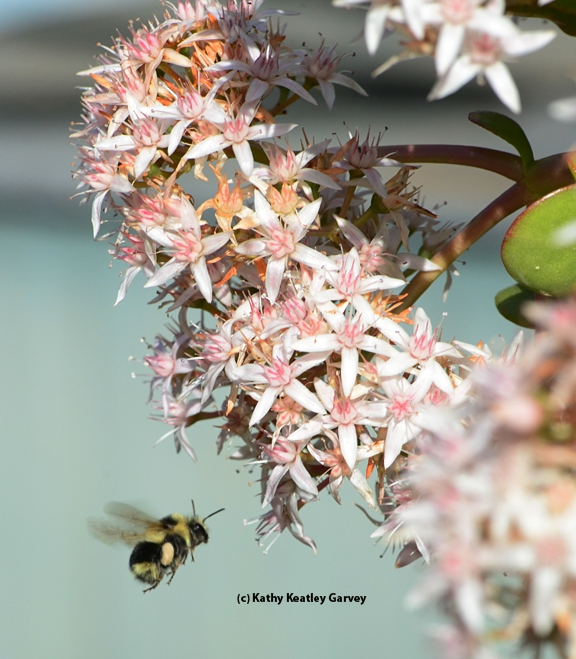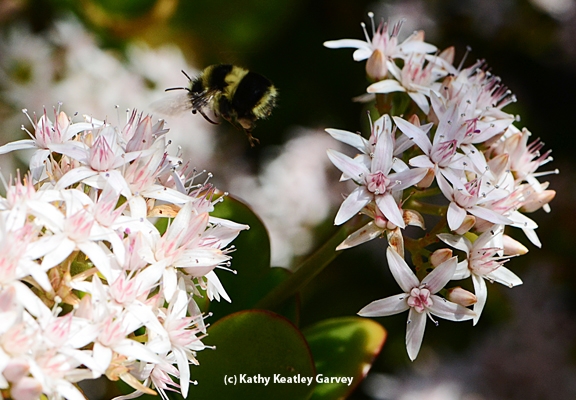A journey to the Benicia (Calif.) Capitol State Historic Park, Solano County, on Christmas Day yielded the unexpected: a black-tailed bumble bee, Bombus melanopygus, foraging in jade blossoms.
Several honey bees and at least one lady beetle (ladybug), also discovered the "hot spot" in the garden as the temperatures climbed to 52 degrees.
A bumble bee in Benicia? On Christmas Day? Who would have thought?
This bumble bee species, identified by native pollinator specialist Robbin Thorp, emeritus professor of entomology at UC Davis, is one of only 250 species worldwide in the genus Bombus. It's native to North America.
Thorp is one of four co-authors of the newly published and long-awaited Bumble Bees of North America: An identification Guide (Princeton University Press). The book is billed as "the first comprehensive guide to North American bumble bees to be published in more than a century." It allows us to identify all the 46 bumble bee species found in North America, and also to learn about "evolutionary relationships, geographical distributions and ecological roles."
Lead author is Paul H. Williams, a research entomologist at the Natural History Museum in London. In addition to Thorp, other co-authors are Leif L. Richardson, a doctoral candidate in the Department of Ecology and Evolutionary Biology at Dartmouth College; and Sheila R. Colla, postdoctoral fellow at the Natural Sciences and Engineering Research Council of Canada and a project leader at Wildlife Preservation Canada.
Meanwhile, back to Benicia. Like North America's bumble bees, the Benicia Capitol has a rich history. Erected in 1852 and located at 115 West G St., it served as California's third seat of government. Legislators convened there from Feb. 4, 1853 (the year the honey bee was introduced to California) to Feb. 25, 1854.
Today, 160 years later, the Benicia State Capitol is the only surviving pre-Sacramento capitol. Let's hope we can still say that about bumble bees 160 years from now--and the years to come.
Attached Images:

